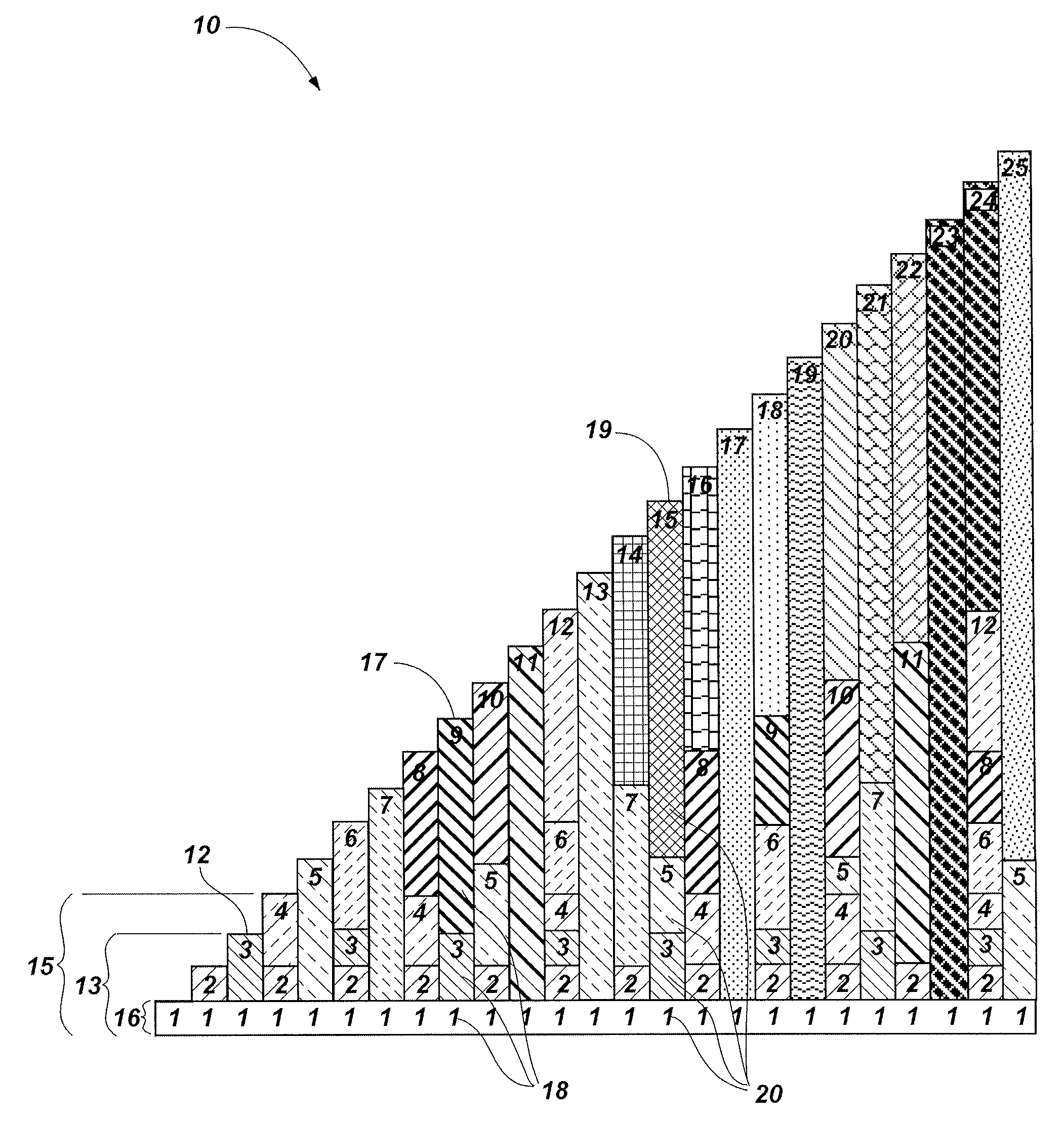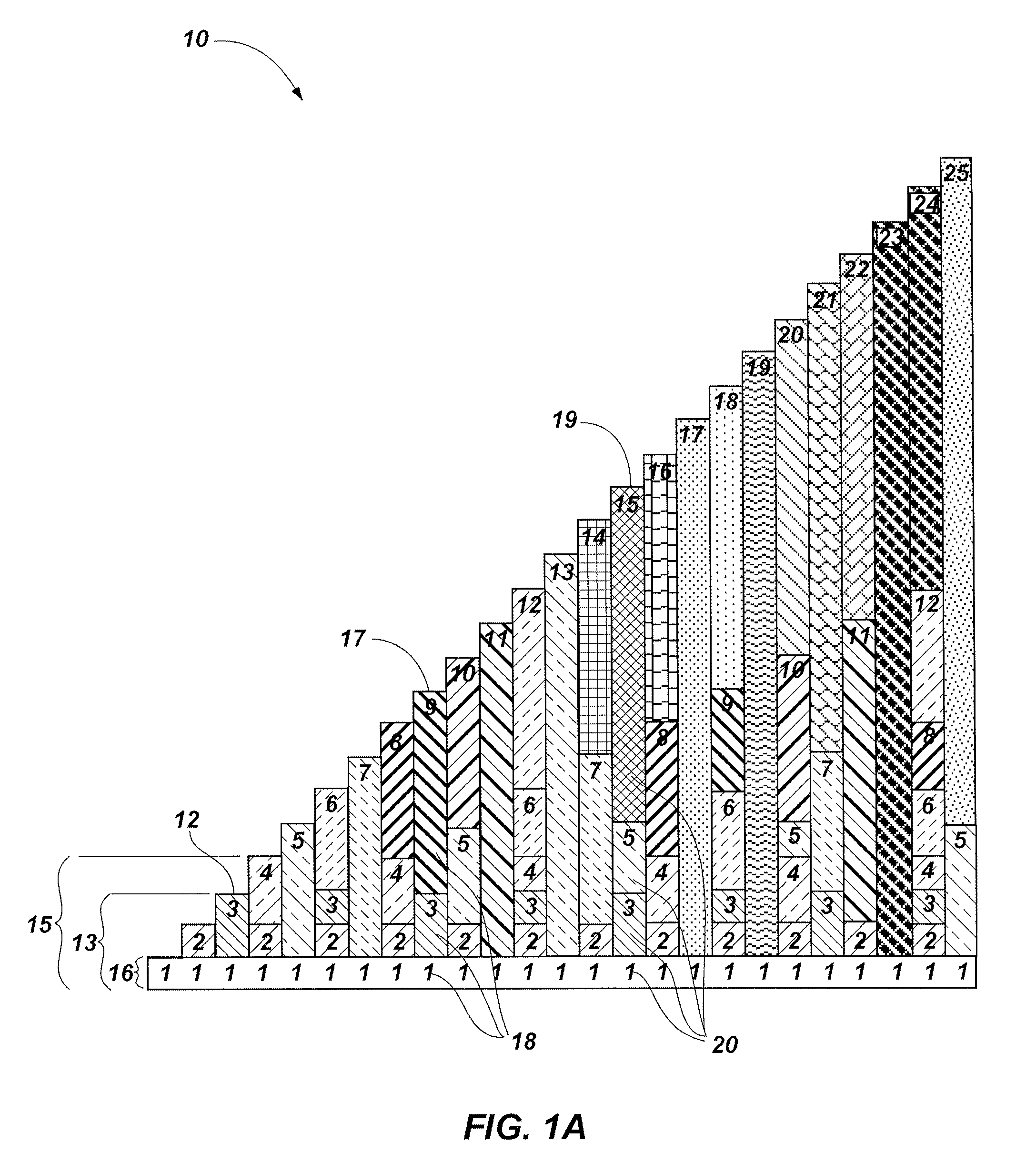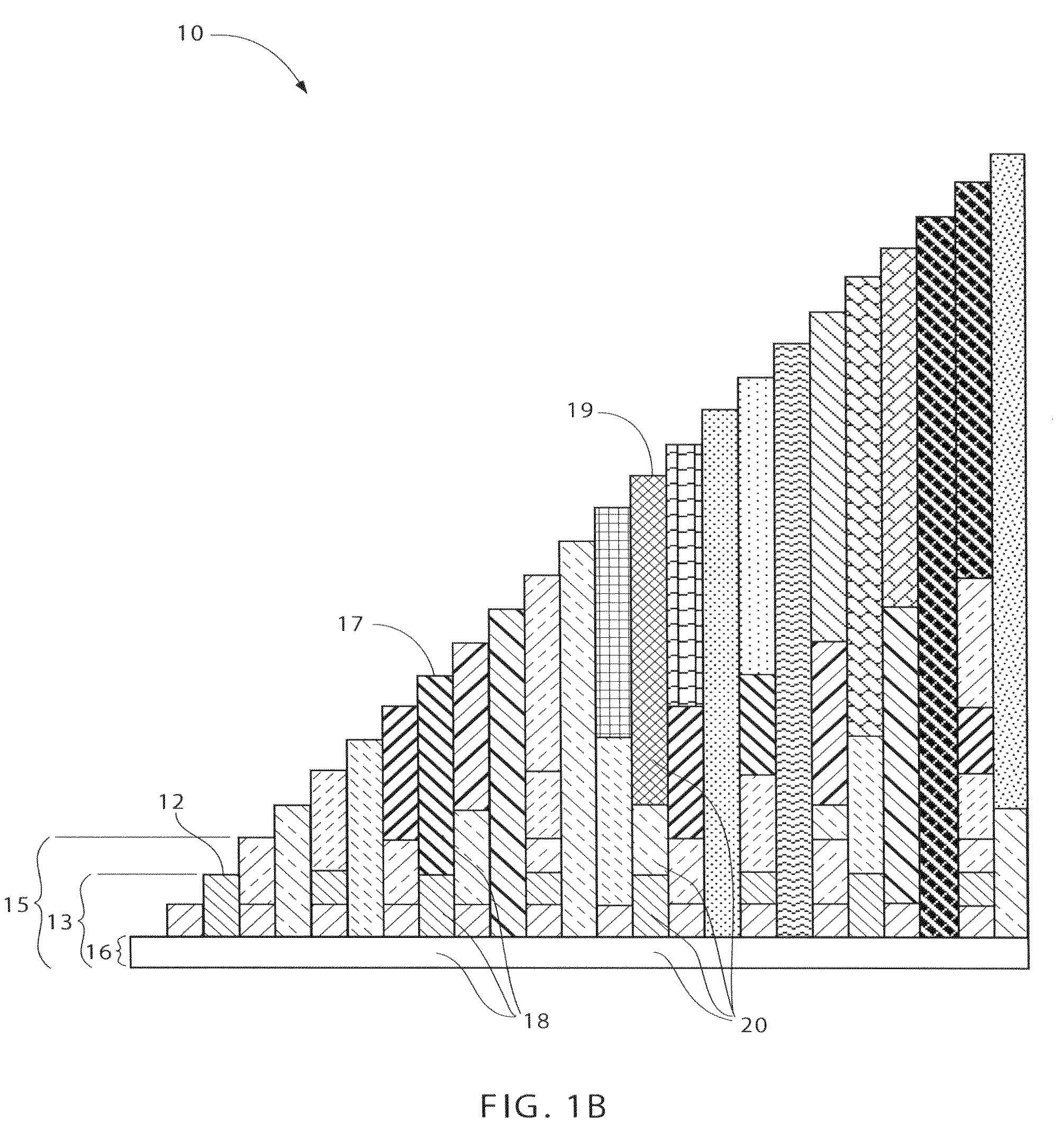Method and device for teaching and/or calculating mathematics
a mathematical and mathematical technology, applied in the field of methods and devices for teaching mathematics, can solve problems such as difficulty in kinesthetically taught principles, difficulty in mathematics and science, and difficulty in defining the principle,
- Summary
- Abstract
- Description
- Claims
- Application Information
AI Technical Summary
Benefits of technology
Problems solved by technology
Method used
Image
Examples
example 1
Addition / Subtraction
[0072]The principles of addition and subtraction are based upon “adding to” or “taking away from” a number (counting forward or backward). Thus, using the device 10 and method, an equation may be solved and / or a principle visually learned and / or taught.
[0073]FIG. 9 illustrates the equation 5+3=8. To solve the equation, an individual, or set of instructions begins at the length representative of one of the numerical values in the equation, e.g., number five (5) 91 and then adds the additional number three (3) by counting three lengths to the right in the positive direction. In counting three lengths to the right, an individual, or set of instructions, arrives at the length representative of the solution 92, or the numerical value (eight) 8 92.
[0074]Also shown in FIG. 9 is the equation 7−4=3. To solve the equation an individual, or set of instructions, starts at the length representative of number seven (7) 93 and subtracts four (4) by counting four lengths to the ...
example 2
Multiplication
[0077]In one embodiment, because multiplication is primarily based upon the mathematical factors of a numerical value, the device 10 and method may be used to visually teach and calculate multiplication equations. In one aspect, the device 10 and method assist and enable multiplication to become a more concrete and visual concept, rather than just an abstract equation.
[0078]FIG. 10A illustrates the equation 5×4=20. In principle, multiplication may be defined as the sum of a number of groups and the amount in each group. For example, in the equation 5×4=20, the solution is the sum of five groups, each group containing an amount of four (4). To solve the equation an individual marks or otherwise visualizes the length representative of one of the numerical values in the equation, e.g., four (4) 102 and then counts out or marks five (5) visual marker representative of the numerical value four (4) 102 to the right, or in the positive direction. As shown, the first four (4) ...
example 3
Multiplication With Negative Numbers
[0080]Similar to the multiplication methods previously described, the device 10 and method may be used to teach and calculate multiplication principles and equations involving negative numbers. For example, the equation 4×−2=−8 may be visualized on a negative portion of the device 10 and method. Similar to multiplication using positive numbers, the equation asks for the sum of four groups of negative two (−2). In accordance with this principle, as illustrated in FIG. 10B, to solve the equation an individual, or set of instructions marks, counts, or otherwise visualizes four groups of the visual marker representative of negative two (−2) 108 on the device 10. As shown, the first negative two (−2) corresponds to the length representative of the numerical value negative two (−2) 109, the second corresponds to the visual marker of negative four (−4) 110 and so on. The fourth negative two (−2) corresponds to the length representative of the numerical v...
PUM
 Login to View More
Login to View More Abstract
Description
Claims
Application Information
 Login to View More
Login to View More - R&D
- Intellectual Property
- Life Sciences
- Materials
- Tech Scout
- Unparalleled Data Quality
- Higher Quality Content
- 60% Fewer Hallucinations
Browse by: Latest US Patents, China's latest patents, Technical Efficacy Thesaurus, Application Domain, Technology Topic, Popular Technical Reports.
© 2025 PatSnap. All rights reserved.Legal|Privacy policy|Modern Slavery Act Transparency Statement|Sitemap|About US| Contact US: help@patsnap.com



